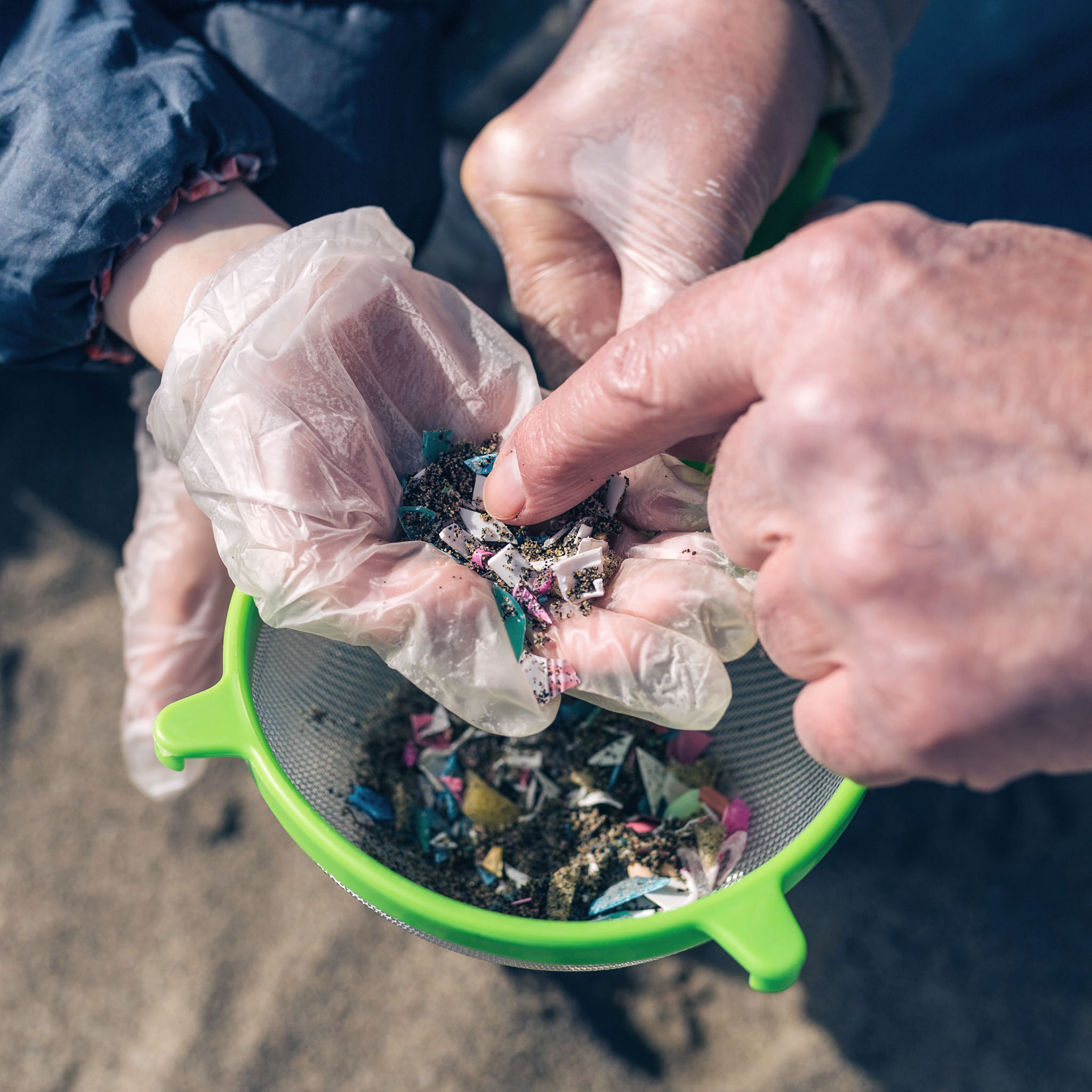Could Plants be the Solution to Microplastic Pollution?

Microplastic pollution is rapidly becoming one of the biggest challenges the world is facing today. These tiny plastic particles, measuring up to 5mm in diameter, can be found in soils, freshwater, oceans, and even in the air we breathe, the water we drink and the food we eat [1][2]. Microplastics are so widespread that they have been detected in various human organs, including the placenta of newborn babies. Exposure to them can cause serious health effects, with women being particularly vulnerable. The health impacts can include changes to human genetics, brain development, and respiration rates, among other issues [2][3]. However, plants may be able to provide a solution to this problem, as they can act as an unlikely hero in the fight against microplastic pollution.
A recent discovery by researchers at the BioProducts Institute of the University of British Columbia has revealed that the addition of tannins (naturally occurring compounds that give tea, coffee, and wine their flavor) to a layer of wood dust can create a natural filter that has the ability to trap almost 100% of microplastic particles present in water [4].
Even though the research team has only conducted the experiment in the laboratory, they are confident that the set-up can be easily and cheaply scaled up with the help of the right partner for commercialization of the project [5].
Microplastics are tiny plastic fragments generated from the breakdown of consumer products and industrial waste. Dr. Orlando Rojas, Scientific Director at UBC's BioProducts Institute and the Canada Excellence Research Chair in Forest Bioproducts, highlights the significant challenge posed by preventing microplastics from entering water sources. A 2017 investigation by Orb Media found that over 80% of water samples collected across five continents in different countries contained microplastic fibers [6]. As long as plastic waste continues to be produced, more and more microplastics will end up in the environment, contaminating the water we drink and the food we eat, including fish.
According to Dr. Orlando Rojas, most of the proposed solutions for microplastic pollution are either expensive or difficult to scale up. However, the solution proposed by their research team can be scaled down for home use or scaled up for municipal treatment systems. "Our filter is made using renewable and biodegradable materials, unlike plastic filters, and does not contribute to further pollution," Rojas explains. The filter is made using tannic acids from plants, bark, wood, and leaves, as well as wood sawdust, which is a renewable and widely available forestry byproduct.
Traps a Wide Range of Plastics
The research team examined microplastics released from commonly used polypropylene tea bags in their study. They named their approach 'bioCap', and it was able to capture between 95.2% to 99.9% of plastic particles present in the water column, with the efficiency varying depending on the type of plastic present. The team also conducted laboratory tests on mouse models and found that this process can effectively inhibit the accumulation of microplastics in the organs of the body.
According to Dr. Rojas, capturing all the various types of microplastics found in a solution is difficult due to their different sizes, shapes, and electrical charges. Dr. Rojas is also a professor in the departments of wood science, chemical and biological engineering, and chemistry at UBC. The types of microplastics present include microfibers from clothing, microbeads from cleansers and soaps, and foams and pellets from utensils, containers, and packaging. However, the bioCap solution was able to remove almost all of these different types of microplastics by utilizing the various molecular interactions surrounding tannic acids.
Collaborating Toward Sustainable Solutions
The development of the UBC technique was the result of a collaboration between Dr. Rojas and Dr. Junling Guo, a professor at the Center of Biomass Materials and Nanointerfaces in Sichuan University, China. The project also received significant contributions from Marina Mehling, a PhD student in UBC's Department of Chemical and Biological Engineering, and Dr. Tianyu Guo, a postdoctoral researcher at the BioProducts Institute.
Dr. Rojas expressed his enthusiasm for the BioProducts Institute's multidisciplinary collaboration that has brought us closer to finding a sustainable solution to combat the challenges posed by microplastics, which pose a growing threat to aquatic ecosystems and human health.
Sources:
- Lee, Y., Cho, J., Sohn, J., & Kim, C. (2023). "Health Effects of Microplastic Exposures: Current Issues and Perspectives in South Korea." Yonsei Medical Journal, 64(5), 301-308. https://doi.org/10.3349/ymj.2023.0048
- UNEP. Microplastics: The long legacy left behind by plastic pollution.
- UNEP. From Pollution to Solution: A global assessment of marine litter and plastic pollution.
- Wang, Y., Wang, M., Wang, Q., Wang, T., Zhou, Z., Mehling, M., Guo, T., Zou, H., Xiao, X., He, Y., Wang, X., Rojas, O.J., & Guo, J. (2023). Flowthrough Capture of Microplastics through Polyphenol‐Mediated Interfacial Interactions on Wood Sawdust." Advanced Materials, DOI: 10.1002/adma.20230153
- University of British Columbia. "Microplastic pollution: Plants could be the answer." ScienceDaily. (2023, August 16).
- Tyree, C. "Invisibles: The Plastic Inside Us." Orb Media.
- Gold Coated Membranes Applications: Detecting Microplastics from Pharmaceuticals
- Part 1: Clean Beaches Week: Could Robotic Fish Solve the Microplastic Pollution Problem
- Sifting through Microplastics: Filtration Research Provides Answers
- Microplastics in the environment: tiny particles, huge problem
- Plastic-eating Enzyme Could Stem the Tide of Plastic Entering the Oceans
- Most Viewed Blog Articles (5)
- Company News (285)
- Emerging Technologies (64)
- Microbiology and Life Science News (93)
- Water and Fluid Separation News (97)
- Filtration Resources (93)
- Product News (19)


![Join Sterlitech at BIO 2024 [Booth #5558]: Exploring the Future of Biotechnology](https://www.sterlitech.com/media/blog/cache/300x200/magefan_blog/b4.jpeg)



